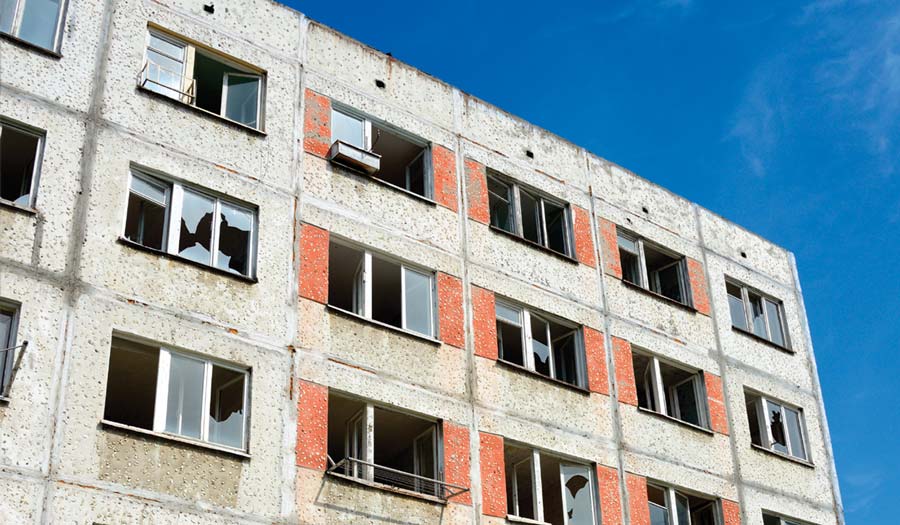Defends
Posted by Mindy Limback

One of only three Category 5 hurricanes to hit the U.S. since records have been kept, Hurricane Andrew caused wind speeds upwards of 175 mph. One of the costliest hurricanes in U.S. history, Andrew killed 43 people and caused $30.5 billion in damage.
Wind damage and injuries following Hurricane Andrew in the 1990s drew Lokesh Dharani to glass research.
Dharani, Curators’ Professor of mechanical and aerospace engineering, was one of several researchers at S&T to receive National Science Foundation funding to develop a new approach to making a stronger laminated architectural glass.
The laminated glass consists of two soda lime silicate glass layers that sandwich a layer of polymer, like poly vinyl butyral (PVB).
“Roof gravel, asphalt pieces flying from the roof, shingles, windborne pieces of lumber — these are all considered ‘missile impact’ on glass,” he says. “Windborne debris combined with strong winds is the main reason for failure of architectural glazing.”
Upon impact, monolithic (single-pane) glass breaks into dangerous shards, and causes a breach in a building’s protective barrier. But laminated glazing, Dharani says, holds the broken pieces of glass in its interlayer, which stays in the frame and maintains the building’s structural integrity.
“It’s called sacrificial ply design,” he says. “We intentionally sacrifice the outer layer, allow it to fracture, crack and absorb all the energy, but the inside layer stays intact.”